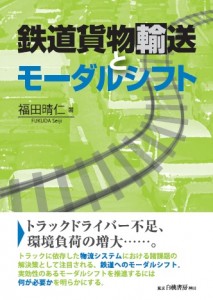 |
タイトル:都市行政の最先端―法学と政治学からの展望
著者:久末弥生[編]
本書では、都市行政研究を専門とする法学者および政治学者が、現代社会において私たちが直面する都市行政のさまざまな課題のうち社会的に話題となったテーマを取り上げ、行政の今とその先について鋭く分析し、わかりやく解説していく。さらに、未来社会の都市生活を支える行政システムの提言を、近未来の具体的なイメージと共に、さまざまな方向から試みる。第1章(板垣勝彦)では日常生活の土台として私たちに最も身近な住宅について、第2章(三好規正)では私たちの日常生活に不可欠な水管理について、それぞれ考察する。第3章(北村喜宣)では自治体レベルでのアップデートが常に求められる環境行政について、第4章(久末弥生)では災害の大規模化に伴う喫緊の国土安全保障対策について、それぞれ検討する。第5章(寺田麻佑)では私たちの都市生活そのものを日々変革させる情報通信について、第6章(松尾剛行)では都市行政システム全体への導入が急速に進むAI・ロボットについて、それぞれ分析する。第7章(久末弥生)では半世紀の試行錯誤を経て一定の成熟を見せる医療訴訟について、第8章(髙野恵亮)では1947年の第1回国会から都市基盤を支えてきた議員立法の今について、第9章(江藤俊昭)では20世紀から21世紀にかけての議会改革の大きなうねりについて、それぞれ概観する。
“Cutting Edge of Urban Governance: Vision of Law and Political Science”
Yayoi Hisasue [Author and Editor]
In this book, six jurists and two political scientists discuss and analyze topics ranging from property law, water law, local environmental governance, national security, information law, practical applications of AI and robotics, modern litigation, promulgation of legislation, and parliamentary reform in a highly accessible manner.
This is the second volume of the new “Urban Management Studies Series” published by Osaka City University.
To maintain the interest of readers and keep the material relevant, contemporary topics of interest are examined in this book. Further, the editors of this book have attempted to provide a wide variety of opinions on the administrative systems that are currently employed to maintain urban life, with clear view towards the future. |
 |
タイトル:鉄道貨物輸送とモーダルシフト
著者:福田晴仁
貨物輸送をトラック輸送から鉄道や船舶による輸送に転換する、モーダルシフトが叫ばれて久しい。しかし鉄道は貨物輸送における補完的機能を果たすのみとなっており、モーダルシフトが進展しているとは言い難い。モーダルシフトを推進するには、公的部門による大規模な支援によって主要幹線の輸送力を増強すること、JR貨物の独占となっている地域間鉄道貨物輸送市場への新規参入を促進し、市場を活性化することが必要である。
Since the 1990s in Japan, there has been demand for a modal shift in freight transport from truck transport to transport by rail and ship. However, rail freight transport plays only a complimentary role, accounting for a little less than a 1% share of freight transport on the basis of tonnage and a share of around 5% on the basis of ton-kilometers. It is hard to say that this modal shift from truck to rail is progressing. Two measures are necessary to promote a modal shift from truck to rail transport.
The first measure is to facilitate new entries of railway companies into the rail freight transport market both to avoid reductions in the rail freight route network resulting from JR Freight discontinuing its rail freight services, and to activate that market. This is an important measure to promote the modal shift by ensuring that intercity rail freight transport does not become a JR Freight monopoly, and by stimulating the rail freight transport market.
The second measure is to carry out effective infrastructure development in reinforcing the rapid long-distance service of container trains on trunk lines where demand is vigorous. Under the current small scale infrastructure development, container freight trains have increased from 24 cars to 26 cars, but adding only two cars to a train is insufficient to promote modal shift. It is essential that measures are carried out that can increase transport capacity and reduce impediments to transport. One example of specific measures in this area is the development of bypass routes to allow freight trains to run. |
